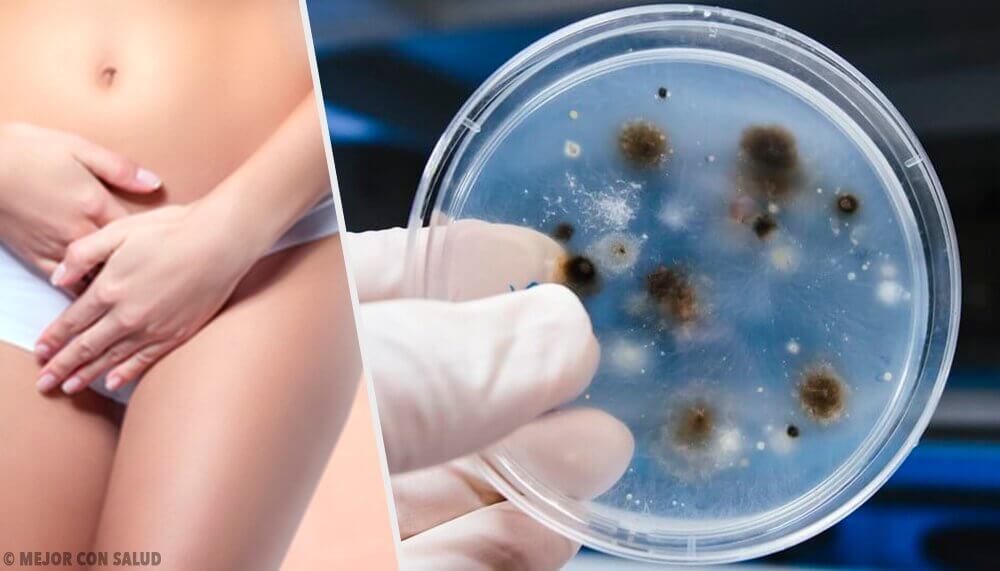Vaginal Infections: The Types and Causes
Vaginal infections can cause changes in both the vaginal area and the vulva .
In this article, we’ll talk about the most common vaginal infections and the causes that tend to trigger them more frequently.
Causes of vaginal infections
Some women suffer more often. However, it does not necessarily imply poor hygiene, bad habits or risky sexual practices.
Visit this article: Fight Bacterial Vaginosis With 5 Natural Remedies
Not changing condoms
Although it is not directly linked to the appearance of vaginal infections, it is considered one of its causes when having anal and vaginal sex without changing condoms. What happens in this case is that fecal bacteria are spread from the anus to the vagina. To avoid the problem, it is important to change the condom if you want to perform both sexual practices.
Antibiotics
This sounds contradictory because in theory antibiotics seek to eliminate disease-causing agents. However, you can experience vaginal infections because this type of drugs affects both the beneficial bacteria (bacterial flora) and the harmful bacteria, which makes us more susceptible to developing fungal infections.
Hormone alteration
Hormonal changes can also cause vaginal fungal infections due to increased estrogen in the body. The moments in which we are most susceptible are during pregnancy , under hormonal therapy or during menopause.
You wear clothing made of synthetic materials
As we all know, warm, humid and poorly oxygenated sites are places where bacteria and fungi that cause infections develop more easily. In this category we find:
- Tight pants
- Underwear made of synthetic materials
- Lycra pants or leggings
All of them create a perfect environment for the development of microorganisms in the genital area, especially yeast. If you like tight pants, try to take them off or change them every 10 hours. In addition, it is recommended that you check the label and choose those made with at least 50% cottton.
We recommend you read: 5 Undergarments That Help You Stay Healthy
High blood glucose levels
The taste for sweets is not exclusive to humans, yeasts also love it, so there is a connection between diabetes and yeast infections. It is important to eat a diet low in fats and sugars, both to improve health and to prevent certain diseases. In case of having diabetes, you must make sure to keep your glucose levels within the physiological range.
Types of vaginal infections
Not all vaginal infections are the same. Each one has different characteristics and must be treated in a particular way.
Vaginal mycosis or fungal infection
This is the case of candidiasis. Fungal infections are the most common. Specifically, candidiasis usually produces:
- Thick vaginal discharge
- Redness in vagina and vulva
- Itching
Its treatment is simple in most cases. You can buy ovules or creams that you can find at any pharmacy.
Bacterial vaginosis
It is common in women of reproductive age. Vaginosis increases the risk of developing sexually transmitted diseases. It is characterized by:
- Vaginal discharge with a “fishy” smell after sexual intercourse
- Pain when urinating
- Discolored or white discoloration
- Vaginal itching and pain
Vaginal infections by trichomonas
It is caused by a microbial agent called Trichomonas vaginalis . This type of infection should be treated with antibiotics , since it is spread through sexual intercourse. Their characteristics are:
- Smell of mold
- Greenish yellow discharge
- Vaginal burning and itching
Chlamydia
It is a sexually transmitted infection. Not only is it able to affect the genital area, it can also cause other diseases such as arthritis, pneumonia or conjunctivitis. It gives rise to bad odors in the vaginal discharge, which in these cases, assumes a whitish color.
Vaginal infection of viral type
This type of infection is caused by the herpes simplex virus . In addition to irritation, blisters appear in the genital area that turn into ulcers.
Another reason why this type of infection appears is the human papilloma virus that causes genital warts. In either case, it is important to see a doctor.
All cited sources were thoroughly reviewed by our team to ensure their quality, reliability, currency, and validity. The bibliography of this article was considered reliable and of academic or scientific accuracy.
- Brotman, R. M. (2011). Vaginal microbiome and sexually transmitted infections: An epidemiologic perspective. Journal of Clinical Investigation. https://doi.org/10.1172/JCI57172
- Mashburn, J. (2012). Vaginal Infections Update. Journal of Midwifery and Women’s Health. https://doi.org/10.1111/j.1542-2011.2012.00246.x
- Rosenfeld, J. A. (2009). Vaginitis. In Handbook of Women’s Health, Second Edition. https://doi.org/10.1017/CBO9780511642111.013
- Aydin, A., Ahmed, K., Zaman, I., Khan, M. S., & Dasgupta, P. (2015). Recurrent urinary tract infections in women. International Urogynecology Journal. https://doi.org/10.1007/s00192-014-2569-5
- Fidel, P. L., Jr, Cutright, J., & Steele, C. (2000). Effects of reproductive hormones on experimental vaginal candidiasis. Infection and immunity, 68(2), 651–657. https://doi.org/10.1128/iai.68.2.651-657.2000

